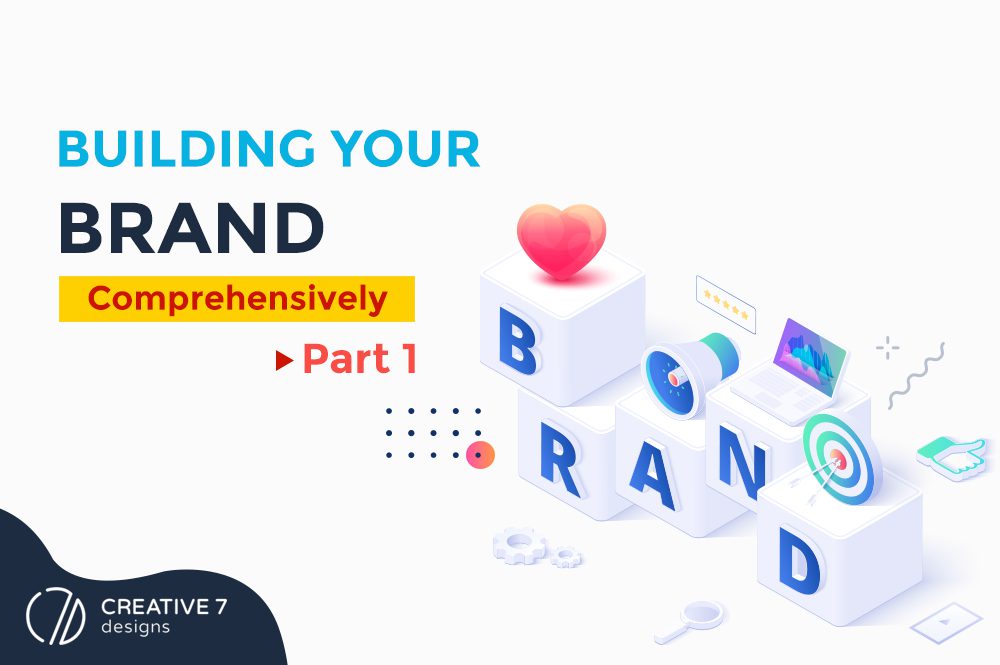Inside tips from a marketing agency on how to develop a unique brand identity no matter the niche
 Building a unique brand identity isn’t easy. And for a bit more transparency: Building our brand’s identity hasn’t been easy.
Building a unique brand identity isn’t easy. And for a bit more transparency: Building our brand’s identity hasn’t been easy.
We’ve undergone upgrades, downgrades (aka: identity “crises”), and straight up confusion. Why? It isn’t because we don’t know what we’re doing. It’s actually the exact opposite reason.
The marketing industry is forever changing and, as a marketing agency that knows what we’re doing, we know that means we’re in that boat of “forever change.”
Literally. In the world of marketing, trends come and go on a month-to-month basis. This means the way we market ourselves either has to be adjusted, or we bite the dust because outdated marketing techniques will eventually be replaced with new ones.
Thankfully, we’ve learned how to navigate current and future industry trends so you (our client) don’t have to deal with the seasickness of wavering marketing trends. (You deserve a settled stomach.)
Here are 6 marketing agency “secrets” we focus on to build a solid brand identity:
Target Demographic
Main Message
Tone Of Voice
Color Palette
Imagery: Graphics/illustration
Typography
Today, we’ll be addressing the first 3 points: target demographic; main message; tone of voice. In part two, we’ll address the final 3 points (color palette, imagery, typography).
TARGET DEMOGRAPHIC
The sole purpose of your brand identity is to speak to your audience. But you also need to be memorable. So you need to know your target audience well.
Sometimes, your audience does the work for you. They’ll tell you what they’re interested in seeing from you, and you simply create the solution to their requests. Other times, it might not be that easy.
Either way, engaging with and listing to your audience isn’t enough to just understand your market. You also have to evaluate your competitors. This enables you to understand where your company is positioned in your industry.
For new brands (as in brands that were just born yesteryear), this isn’t hard to understand. You’re positioned at the bottom of the industry. But, don’t worry, this doesn’t mean you’ll stay there.
Each business has a unique audience, and that includes your brand (even if it’s a newborn). Thankfully, all businesses — and we mean all — come equipped with different audiences who want different things.
Some of these differences include, but aren’t limited to:
Age
Sex
Income
Location
Language
The reason it’s important to establish a target audience is because your brand identity isn’t created as a one-size-fits-all.
Attracting young adults isn’t the same as attracting senior citizens. Designing for college students is different than designing to appeal to lawyers.
In order to create a brand people love, you have to understand your specific target audience and what it wants from your business.
Key Takeaway: Understanding who is your target audience and why should they care about your specific brand is crucial. Do yourself a favor and conduct some audience research. Your brand will be (and needs to be) influenced by your core demographic.
Read more about researching your audience, value proposition, and competition here.
MAIN MESSAGE
As a marketing agency, we come across this several times: A client wants to communicate their message (whether for a service, product, or something else) but wants to do it how they understand it, not how their audience will understand it.
This is a big no.
You know what your business offers, but you have a clear and direct mission statement that describes your vision and goals in a way that makes sense to your audience.
And you can’t communicate this message if you don’t actually know your business’s purpose. Know what you want to say, and use the appropriate language and visuals to say it.
Key Takeaway: Just because it makes sense to you doesn’t mean it will make sense to your customers. Break things down enough for your audience to understand, but not too much that they begin to feel incompetent.
TONE OF VOICE
We just finished talking about how to communicate your main message. Now we’re going to zoom out a bit and get a bigger picture of your brand’s overall tone when communicating various messages.
From taglines to mottoes to slogans (yes, they’re all different), tone of voice will let your audience — and even non-audiences — know your vibe.
– Taglines are constant and usually describe the Brand.
– Mottos describe a value system the company has set up.
– Slogans are used for products and services for specific marketing efforts. The thing that distinguishes them from Taglines is that they change.
Let’s take a look at one of our clients, Beyond The Spectrum.
Tagline: Reaching beyond the sky (…, because the sky is not the limit to your child’s potential.)
The tagline for BTS (shortened here to the first part of the sentence) describes the brand’s focus on helping children reach their fullest potential.
Motto: There is no obstacle that is too large or too small for us.
The motto focuses on the brand’s commitment to care for children regardless of the size of their obstacle.
Slogan: Stimulate your child’s senses.
The slogan, though relevant to the entire business, is specific to their multidisciplinary therapeutic center (also considered a service) which focuses on utilizing play to develop children’s skills.
Can you see how all of these components go hand-in-hand? And, yet, each can act as a separate entity used to solidify the BTS brand identity for their audience.
But, remember, this is about the tone of voice.
Do you want to know why this works for Beyond The Spectrum? It’s because the language that follows (in whatever they put out) is aligned with the entire business message.
Imagine this: Beyond The Spectrum keeps its same message to support children who experience developmental delays of any level but they opt for a sarcastic tone of voice. Does it work?
Easy answer: No. Why? Because sarcasm and children with developmental delays don’t go hand-in-hand. It’s literally like trying to mix oil and water.
Not only would the sarcasm detract from the brand mission, but it’ll also create a horrible reputation for the brand — probably one associated with disrespect, distrust, and basically everything opposite of what the brand is offering.
Key Takeaway: Your brand’s personality determines your tone; this tone you decide on will span every part of your business (social media, emails, ad campaigns). So take the time to craft it.
If your brand is more fun, use language that follows suit. If you deal with higher-end clients, use more professionally-grounded language.
IN CONCLUSION
Your brand identity isn’t just your logo. The latter is really part of the large umbrella called branding. This is a common misconception that we’ve hopefully been able to debunk in this article.
To create a unique brand identity, you need to pay attention to several branding elements:
Your business values
The way you portray your products or services
Your audiences experiences whenever they interact with your brand
Elements that help consumers differentiate you from competitors
And all of these aspects make up your brand. Hence the term “branding” — the process of actively creating the perception of your business among consumers.
But, of course, this isn’t the end. Stay tuned for part two where we discuss the following:
Color Palette
Imagery: Graphics/illustration
Typography


